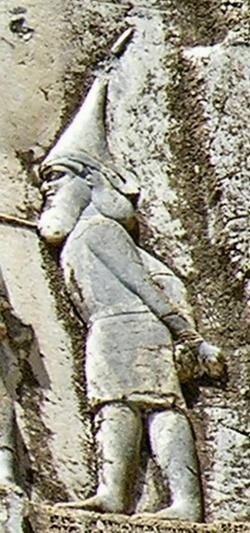they are not extinct their decedents live in western Europe mostly in England , Scotland, Germany, Holland and some Nordic countries. The earliest English historians claimed Scythian heritage for the Anglo Saxon race.
The Anglo-Saxon Chronicle
Annals to A.D. 381
The island Britain1 is 800 miles long, and 200 miles broad. And there are in the island five nations; English, Welsh (or British),2 Scottish, Pictish, and Latin. The first inhabitants were the Britons, who came from Armenia,3 and first peopled Britain southward. Then happened it, that the Picts came south from Scythia, with long ships, not many; and, landing first in the northern part of Ireland, they told the Scots that they must dwell there. But they would not give them leave; for the Scots told them that they could not all dwell there together; "But," said the Scots, "we can nevertheless give you advice. We know another island here to the east. There you may dwell, if you will; and whosoever withstandeth you, we will assist you, that you may gain it." Then went the Picts and entered this land northward. Southward the Britons possessed it, as we before said. And the Picts obtained wives of the Scots, on condition that they chose their kings always on the female side;4 which they have continued to do, so long since. And it happened, in the run of years, that some party of Scots went from Ireland into Britain, and acquired some portion of this land. Their leader was called Reoda,5 from whom they are named Dalreodi (or Dalreathians).
The Anglo-Saxon Chronicle is a collection of annals in Old English chronicling the history of the Anglo-Saxons. The original manuscript of the Chronicle was created late in the 9th century, probably in Wessex, during the reign of Alfred the Great. Multiple copies were made of that original which were distributed to monasteries across England, where they were independently updated. In one case, the Chronicle was still being actively updated in 1154.
Nine manuscripts survive in whole or in part, though not all are of equal historical value and none of them is the original version. The oldest seems to have been started towards the end of Alfred's reign, while the most recent was written at Peterborough Abbey after a fire at that monastery in 1116. Almost all of the material in the Chronicle is in the form of annals, by year; the earliest are dated at 60 BC (the annals' date for Caesar's invasions of Britain), and historical material follows up to the year in which the chronicle was written, at which point contemporary records begin. These manuscripts collectively are known as the Anglo-Saxon Chronicle.
The Chronicle is not unbiased: there are occasions when comparison with other medieval sources makes it clear that the scribes who wrote it omitted events or told one-sided versions of stories; there are also places where the different versions contradict each other. Taken as a whole, however, the Chronicle is the single most important historical source for the period in England between the departure of the Romans and the decades following the Norman Conquest. Much of the information given in the Chronicle is not recorded elsewhere. In addition, the manuscripts are important sources for the history of the English language; in particular, the later Peterborough text is one of the earliest examples of Middle English in existence.








